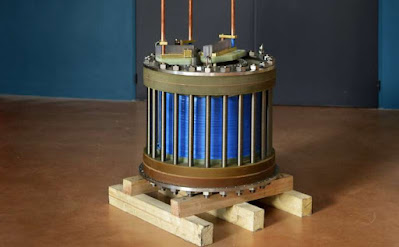Electrons with Planckian scattering in strange metals follow standard rules of orbital motion in a magnet
Strange metals, or non-Fermi liquids, are distinct states of matter that have been observed in different quantum materials, including cuprate superconductors. These states are characterized by unusual conductive properties, such as a resistivity that is linearly associated with temperature (T-linear).
Listen this article in our podcast.
In the strange metal phase of matter, electrons undergo what is known as "Planckian dissipation," a high scattering rate that linearly increases as the temperature rises. This T-linear, strong electron scattering is anomalous for metals, which typically present a quadratic temperature dependence (T2), as predicted by the standard theory of metals.
Researchers at Université de Sherbrooke in Canada, Laboratoire National des Champs Magnétiques Intenses in France, and other institutes worldwide have recently carried out a study exploring the possibility that the resistivity of strange metals is not only associated with temperature, but also with an applied magnetic field. This magnetic field linearity had been previously observed in some cuprates and pnictides, with some physicists suggesting that it could also be linked to Planckian dissipation.
The researchers carried out their experiments on two specific cuprate strange metals, namely Nd0.4La1.6−xSrxCuO4 and La2−xSrxCuO4. Their findings, published in Nature Physics, suggest that the resistivity of these two strange metals is consistent with the predictions of the standard Boltzmann theory of electron motion in a magnetic field in all ways, highlighting no anomaly associated with Planckian dissipation.
"We wanted to investigate the field dependence of Planckian scattering rate in the strange metal phase of cuprate superconductors, in particular in NdLSCO, that its scattering rate was previously measured with Angle Dependence Magnetoresistance (ADMR) experiments," Amirreza Ataei, one of the researchers who carried out the study, told Phys.org. "In this material, due to a relatively low critical temperature, Tc, we had access to one of the largest measured ranges of B-linear resistivity and were able to reproduce the magnetoresistance over this magnetic field range using the standard Boltzmann theory."
A key objective of the recent work by Ataei and his colleagues was to determine whether the in-plane magnetoresistance in the strange metal phase of namely Nd0.4La1.6−xSrxCuO4 and La2−xSrxCuO4 was anomalous in instances where the magnetic field and electric current were in parallel. Ultimately, the measurements they collected suggest that it was not.
"We expect our findings to have a big impact in the field of Planckian dissipation, a major mystery in condensed-matter physics with intriguing connections to the physics of black holes," Ataei explained. "We show that this enigmatic phenomenon is insensitive to magnetic field, up to 85 T, one of the highest achievable magnetic fields in the world."
Overall, the results gathered by this team of researchers would seem to challenge the hypothesis that the linear dependence of resistivity on a magnetic field observed in some strange metals is associated with Planckian dissipation. In contrast, their experimental data suggests that Planckian dissipation is only anomalous in its temperature dependence, while its field dependence is aligned with standard theoretical predictions.
"We now plan to extend the scope of this research to different quantum materials in the strange metal phase or in its proximity," Ataei added.
For more such news & interesting articles or how can it affect in your life subscribe to our newsletter



Comments
Post a Comment